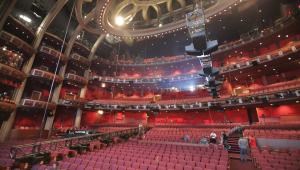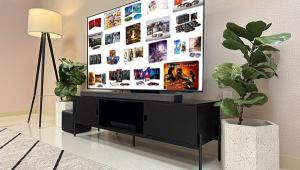Cedia Installer Boot Camp: The Last 10 Feet Page 2
![]() Bruce Copp, for instance, is a retired airline pilot from Austin, Texas, who built sound studios about 30 years ago, then decided to return to his first love when he found himself back on the ground. But most of the students were in their 20s or early 30s, just starting out. Among them was Ron Barak, a licensed electrician in upstate New York who has a growing side business hanging plasma screens and is now ready to combine his "high-voltage" and "low-voltage" credentials into a full-tilt install biz.
Bruce Copp, for instance, is a retired airline pilot from Austin, Texas, who built sound studios about 30 years ago, then decided to return to his first love when he found himself back on the ground. But most of the students were in their 20s or early 30s, just starting out. Among them was Ron Barak, a licensed electrician in upstate New York who has a growing side business hanging plasma screens and is now ready to combine his "high-voltage" and "low-voltage" credentials into a full-tilt install biz.
Other guys also handed me business cards declaring themselves owners and presidents of their fledgling enterprises. Jeff Ruttenberg, a high-school math teacher from Bend, Oregon, admitted he was prompted in part by my prior Boot Camp article to take a string of CEDIA courses and launch his own company. When I announced my affiliation, he declared, with a half-smile, "You're the reason I'm here spending all this money on training." Oops! Like I said, we get what we ask for . . .
As with Basic Boot Camp, the advanced course runs a very solid 3 days: You start at 8 o'clock every morning and run until 5:30 p.m., with a brief break for lunch. Each session is a mix of classroom work and "lab" time in the attached warehouse. In "Making the Grade," I wrote about the cool lab booths CEDIA created to mimic a real home, with both open studs and sheetrocked areas to play in. But for Advanced Boot Camp, the organization went further and built four acoustically isolated theater rooms, each measuring 17 x 14 x 9 feet and trimmed out with carpeting, molding, painted walls, and a single home-theater easy chair.
As explained by CEDIA's then-director of technical training, Dave Pedigo (who now heads up the group's new Technology Council), our 3-day lab project involved breaking into two groups, each of which would turn a stack of manufacturer-donated high-end gear into a fully operational home theater. Each room had a motorized Draper projection screen, a Runco DLP front projector, a 61-inch LG plasma TV, an AudioControl surround sound preamp/power-amp stack and multichannel equalizer, a Key Digital video switcher/processor, a DirecTV HD receiver, DVD players from Arcam and Marantz, B&W floorstanding and bookshelf speakers, a Universal Remote programmable remote control, a Furman power conditioner and APC backup system, an equipment rack/closet from Middle Atlantic, and various Auralex room-treatment panels for the walls and ceiling. Ultimately, the two teams would be assessed on both the installation appearance and the audio/video experience. Oh, and by the way: This was indeed to be a competition for bragging rights to the best-sounding and best-looking install. Or, as Dave put it: "One group will win immunity, and the other will be kicked off the island."




























































